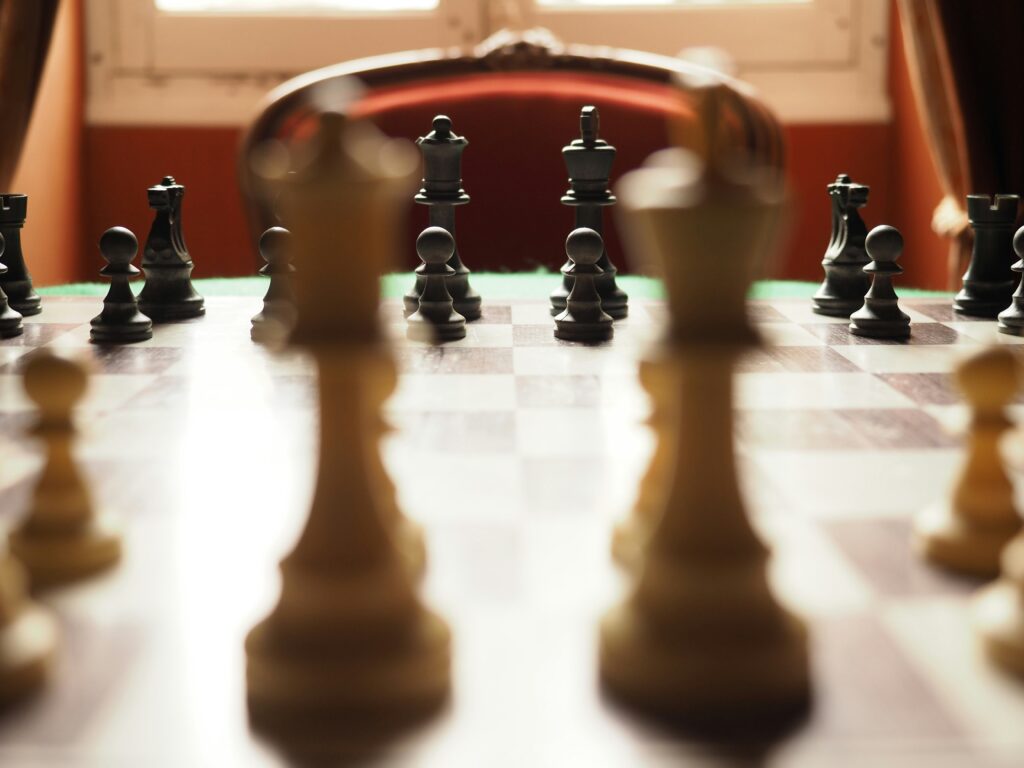Why Tactics Trump Reflexes
“Just aim better.” You’ve heard it. Maybe even said it. It’s the classic fallback when someone loses a fight in a shooter or gets outplayed in a clutch moment. But here’s the truth: aim helps, but it’s not the whole game—and it never was.
What separates an average player from a consistently great one isn’t hand speed. It’s decision-making. Tactics—the way you move, when you commit, how you read the situation—these are the tools that win battles before shots are fired. The player who flanks quietly, sets traps, or coordinates with teammates usually walks away with the win, even if their reaction time is slower.
Think chess, not whack-a-mole. Strategic players lean into the big picture. They know where the enemy is likely to go next. They rotate early. They create their own advantages instead of relying on mechanical perfection. This shift in mindset is how slower players end up dominating reflex gods: they make fewer mistakes, force more errors, and control the pace.
So no, you don’t have to be the fastest hand in the lobby. You just have to be the smartest one. That’s where tactics flip the game.
Step 1: Know the Game Inside Out
Before you start worrying about strategies, start with the basics—and know them cold. Study the maps: not just where choke points and power positions are, but which routes give you options versus traps. Learn where players tend to rotate, where engagements break out, and how objective locations shift pressure over time.
Then dig into the mechanics. Every movement, cooldown, weapon type, or perk has a ceiling—and knowing that ceiling lets you push it without guessing. Understand the recoil patterns, reload speeds, and movement penalties. Little stuff like jump timing or strafe speed makes the difference at crunch moments.
Game modes change everything. Capture the flag isn’t deathmatch. Control zones create different rhythms than elimination rounds. Good players know the rules. Great players build tactics around them.
Now for roles. Whether you’re playing support, attacker, or roaming scout, know your lane. A good support lives longer to help longer. An attacker clears paths, not just racks kills. A scout gathers info and disrupts—without dying needlessly. If your team can’t trust you to own your role, you’re just another problem to solve mid-match.
And finally: watch replays—but not like a fan. Watch to notice. How do top players move on the map? When do they retreat? What do they ignore on purpose? Pause. Rewind. Take notes. Every match has a lesson if you’re looking for it.
Master this foundation, and the rest of your tactics finally have somewhere to stand.
Step 2: Situational Awareness
Good aim means nothing when you’re walking into an ambush. Situational awareness separates average players from smart ones. Start with the basics—reading the map. Don’t just glance; treat it like radar. Where are the pings? Where did your teammate just die? Where’s the action piling up? If you can spot a pattern, you can predict the next move before it hits you in the face.
Anticipating enemy movement means knowing where you’d go if you were them. Most players follow habits. They flank the same routes, camp the same chokepoints, and hunt kills over objectives. If you’ve studied the flow of a match, you’re already two steps ahead.
Now turn that same lens on your teammates. Recognize who’s aggressive, who hangs back, and who actually plays the objective. Pattern recognition helps you sync up without burning time on over-communication.
Then there’s positioning—the quiet MVP of tactical play. A good spot can neutralize a better shooter. Think high ground, solid cover, clear sightlines, and easy escape routes. Don’t just move for movement’s sake. Move with purpose, hold positions that matter, and let the impatient ones march into your crosshairs.
Step 3: Communicate Like It Matters
Comms aren’t about chatter—they’re about clarity. Sharp callouts win firefights. Keep it short: direction, enemy count, and key info like “two pushing left” or “sniper on tower.” If you’re rambling or vague, you’re noise, not help.
But good communication isn’t just about speaking—it’s about knowing when to speak. Read the squad. If no one’s taking charge and the team’s scattered, step up. If you hear strong calls already, back them. Support the plan, don’t compete with it.
Most of all, avoid comms clutter. Don’t shout over a clutch. Don’t state the obvious. Use your mic to coordinate, not confuse. Great teams sound calm and tight, even when everything’s on fire. Keep it clean. Keep it useful. That’s how you turn teamwork into easy wins.
Step 4: Adapt Over Repeat
What worked once probably won’t work twice. Copy-pasting the same move over and over is a rookie mistake that gets punished fast, especially against seasoned opponents. Great players don’t just stick to a playbook—they rewrite it mid-match.
That means watching how your opponent adapts, then countering on the fly. Did your flank get spotted last time? Shake it up. Is the enemy predictably rotating through certain choke points? Set a trap. Static players get farmed. Adaptable ones stay unpredictable, and that’s where control shifts.
Failure isn’t the end—it’s info. That push that went sideways? Break it down. What did you miss? What did they see? Real-time learning is what separates grinders from smart tacticians. You don’t need to be perfect—you just need to upgrade every round.
Step 5: Practice Smarter, Not Just More
Grinding for the sake of grinding won’t get you far. Tactical growth comes from focused, goal-based practice. Instead of loading into game after game hoping things click, zero in on a single skill. Maybe it’s smoke placement. Maybe it’s better crosshair placement on entries. Pick one thing and drill until it’s second nature.
This is where tracking matters. Use stats, review footage, or jot down what worked and what didn’t. When you track your progress, you spot plateaus before they stall you. Progress isn’t always linear, but if you measure it, you can manage it.
Don’t overlook rest. Taking a break between intense sessions isn’t slacking—it’s strategy. Burned-out players make sloppy choices. Operating at peak means knowing when to step back, recharge, and return locked in. Consistent, intentional practice beats mindless repetition every time.
Bonus: Multiplayer Mindset
Winning solo is one thing—doing it as a team is a different beast. In multiplayer, you don’t get to be the lone wolf every time. You don’t get to charge in, ignore the callouts, and expect your team to clean up after you. Thinking like a team player means knowing when to lead, when to support, and when to get out of the way.
Trust is earned, not given. Teammates remember the person who pinged for backup and actually showed up. Or the one who held position, not the one who vanished into a firefight and left the squad hanging. Show up consistently. Do your job. Don’t chase hero plays at the cost of the match.
Multiplayer wins are less about big moments and more about small habits—good comms, revived teammates, smart rotations. Stack those, and teams start to click around you. Suddenly, you’re not hoping for wins. You’re building them.
Still curious about leveling up your team tactics? Check this out: Effective Strategies for Winning Multiplayer Matches
Closing Thoughts: Precision Wins Over Panic
Tactical gaming is more than just knowing how to play — it’s about knowing why you’re making each move. The difference between average players and consistent winners often comes down to mindset, not mechanics.
Mastering Tactics is a Mindset
Reflexes are finite. Strategy isn’t. The most successful players approach every match with intention. They don’t just react — they think ahead, they predict, and they plan.
- Patience and planning beat panic and speed
- Mental focus is your most valuable tool
- Awareness and adaptability matter more than muscle memory
Play Better, Not Just More
Grinding more hours won’t guarantee improvement unless you’re learning as you go. High-performing gamers train with a purpose:
- Reflect after matches: what worked, what didn’t?
- Focus on one mechanic or tactic at a time
- Build muscle memory through repetition—with intent
Stay Strategic, Win Consistently
Wins follow the players who prepare. Stay sharp by doing what others skip:
- Study gameplay footage (yours and others’)
- Keep up with meta changes and patch updates
- Always enter matches with a flexible plan
Success isn’t a fluke — it’s the outcome of a strategic mindset paired with purposeful action.
Stay focused, stay tactical, and the results will follow.




